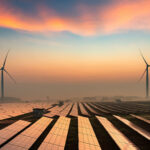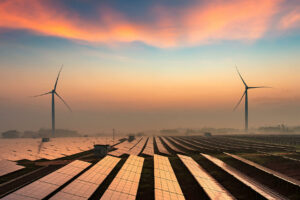The nuclear energy industry has seen an “enormous” turnaround in recent years, and plans for further growth across the world have accelerated with the energy crisis as energy security has become the top priority for countries, the director general of the World Nuclear Association told Anadolu in an exclusive interview.
Global nuclear power capacity is projected to reach up to 931 gigawatts by 2040, a 2.5-fold increase from today’s capacity, Sama Bilbao y Leon said.
The most recent report from the World Nuclear Association states that the current nuclear power capacity is 391 gigawatts. By 2040, capacity is expected to reach 686 gigawatts under the report’s reference scenario and 931 gigawatts under the top scenario.
These projections represent a rise of 71 gigawatts in the reference scenario and 92 gigawatts in the top scenario from the report’s 2021 edition.
“Countries realized there was no way they were going to meet their net zero pledges without including some amount of nuclear energy in the mix. However, plans for growth in the industry accelerated with the energy crisis,” Bilbao y Leon said.
Decarbonization was a priority, especially in the Global North, but energy security has become a more prominent concern following the energy crisis, she said.
After Russia’s war in Ukraine and Western countries’ sanctions on Russia, the energy crisis hit Europe due to very low natural gas supplies from its main supply source. Europe is attempting to shift its energy supply from renewables to nuclear while the effects of the energy crisis are still being felt.
“This is why many countries that have been using nuclear have decided to continue to extend the life of the existing fleet for as long as it is feasible. Countries all over Europe are expanding the capacity,” Bilbao y Leon explained.
Belgium emerged as one of the countries delaying its nuclear phase-out plans by 2025 by extending the life of one of its reactors at two nuclear power plants by 10 years.
“Despite the fact that everybody hears about Germany and its phase out of nuclear, the reality is that most countries in Europe plan to continue using nuclear power while also expanding it. The UK, France, Sweden, Netherlands, Czech Republic, Slovakia, Romania, Estonia, Slovenia and Croatia are all among the countries with further growth plans,” Bilbao y Leon said.
These countries pivot to nuclear power has been underpinned by the goals set by the European Commission to increase nuclear capacity by 50% by 2050 and the Commission’s plans to establish an Industrial Alliance dedicated to small modular reactors in early 2024.
Defining the process “as an enormous turnaround” in nuclear industry, she noted that this is the case not just in Europe but also in numerous other nations, including South Korea, Japan, India, and North America.
1st wave of new power plants to be operational by 2030
Bilbao y Leon confirmed that there is a first wave of new nuclear projects that will be operational by 2030, with 61 nuclear power plants under construction across the world.
“Some of the projects in this first wave are in North America, while many are in Europe, including Türkiye with the Akkuyu Nuclear Power Plant. We expect the first unit of Akkuyu to start operating next year. This is a very good development, and the other units will follow up shortly,” Bilbao y Leon noted.
“I certainly think we expect all four of them to be up and running before 2030. I believe there are other additional growth projects in Türkiye.”
Akkuyu is the country’s first nuclear power plant, with a capacity of 4.8 gigawatts in four units.
Turkish Energy and Natural Resources Minister Alparslan Bayraktar announced plans to have over 20 gigawatts of nuclear energy capacity in the country by the end of 2050.
“Nuclear industry’s access to affordable finance is critical”
Bilbao y Leon said that when the planned and under-construction projects succeed and demonstrate that the nuclear industry “can deliver on time and budget”, the finance community will begin providing considerably more inexpensive credit to the nuclear sector.
“Nuclear projects are large capital investments, and it is essential to have access to affordable finance. Now, there is a perception in the financial community that nuclear projects may be financially risky. That is why we are seeing a relatively high weighted average cost of capital. As we start seeing the success of nuclear projects, I think the weighted average cost of capital will go down by almost half to a level that wind and solar projects are getting.”
She also foresees growth in nuclear supply chains through more investments in uranium mining, combustion enrichment and fuel fabrication projects.
She did, however, take into consideration the fact that 25% of the world’s enrichment capabilities are centered in Russia, which worries the Global North because it would rather not rely on Russian goods and services.
“That is why we are seeing a lot of investment already in North America and Europe to become as self-sufficient as possible,” Bilbao y Leon said.
She clarified that although investment would be required if there was a desire to cease using Russian nuclear services globally, the nuclear industry would already be “independent again” in five years due to the technology’s global reach, which includes experts, industrial facilities, and providers on every continent.
“As North America and Europe do not want to rely on Russian technology or services in any industry, we do not foresee that there will be nuclear power plants that are Russian in these markets,” Bilbao y Leon said.
Nonetheless, some places, like Africa, are looking forward to developing nuclear energy as a viable option. China, Russia, or South Korea can play a role in these regions by providing technology and funding methods that are within their means.
Source : aa
















Add Comment